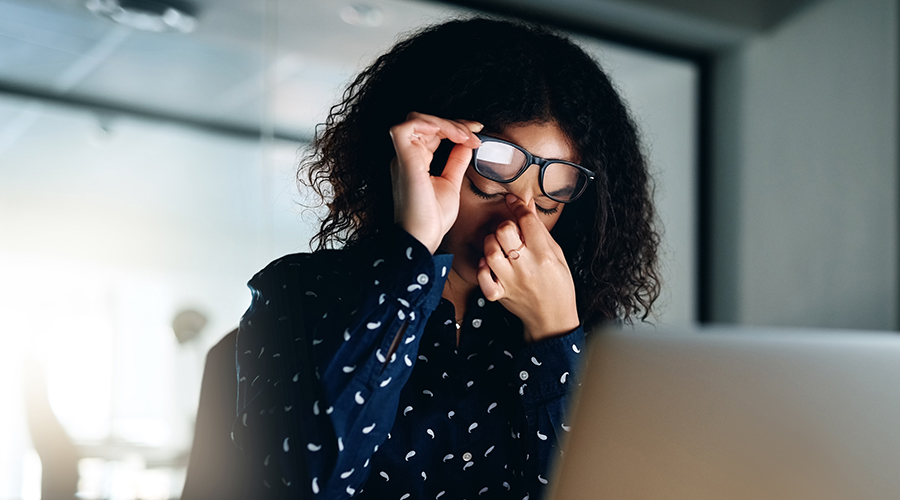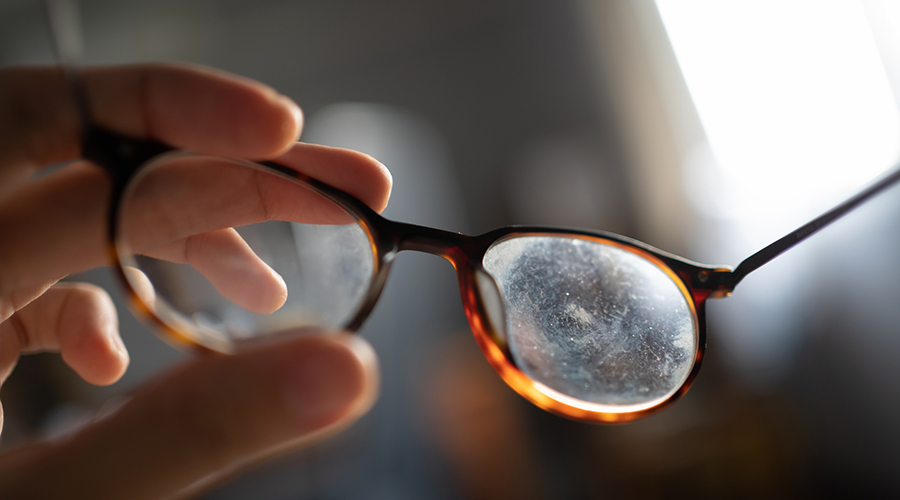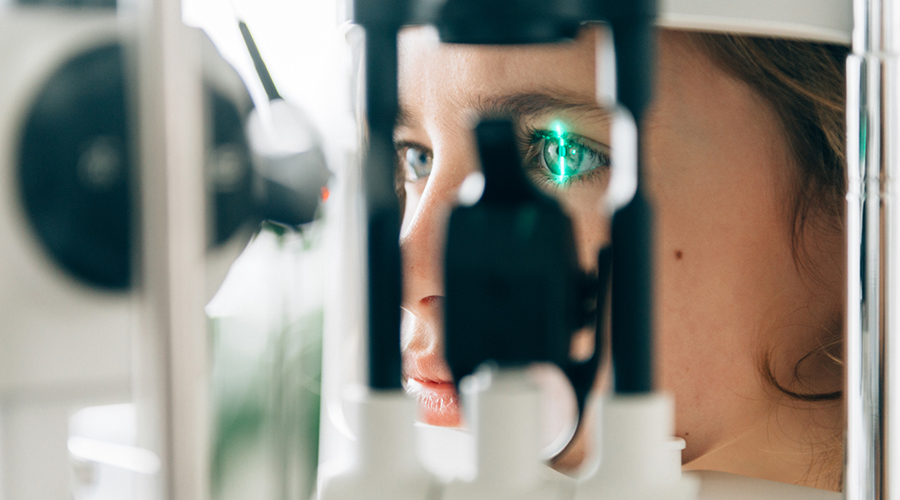A vision of a pain-free workday
The irony of this story is that, while it’s meant to help relieve digital eye strain, it might be contributing to the problem.
We’ve become more vulnerable to this condition during the pandemic. For many of us, more of each day is spent staring at device screens than ever before – and research shows a direct link between increased exposure and a higher incidence of eye strain.
So, in trying to relieve eye strain, particularly for glasses wearers, let’s be brief. To help, we reached out to Tana Currie (Opthalmic Dispensing - Glasses ’06, Optical Sciences - Contact Lenses ’08), owner and lead optician at The Vision Parlour. With 20 years of industry experience, she offers clarity into the blue light debate, the similarities between staring and weight lifting, and why tears may not be enough.

Get fit
After you pick out new frames, an optician fits them and takes measurements that are used in crafting the lenses. Once that’s set, you’re meant to continue looking through the same part of the lenses for the lifetime of the glasses.
“If glasses are sitting slightly crooked, that will affect your vision,” says Currie, and will contribute to strain. What’s more, poor-fitting glasses can apply pressure to nerve endings behind the ears and on the nose, she says, leading to aches.
“If glasses are sitting slightly crooked, that will affect your vision.”
“Come into your optician and get an adjustment. I say every one to two months to make sure that they’re fitting properly.” It’s a free service.
Keep it clean
“Look at the condition of your glasses,” says Currie. Scratches prevent light from passing through cleanly, scattering instead. The eye tries to follow, fatiguing itself. If your lenses look like the surface of a well-used skating rink, replacements are in order.
Reflections off of lenses have a similar effect. Consider an anti-reflective coating, says Currie.

Don’t get the blues
Blue light is part of the visible spectrum of natural light, but it’s a wavelength that is difficult for the eye to focus on, which makes it work harder. This light is also emitted by device screens.
Still waiting for more studies to show that a workday dose is exceptionally harmful, Currie isn’t one to upsell customers on blue light filters, which are visible as a yellow tint on lenses. She won’t dissuade customers from getting them, but “I will never say it’s going to save your vision,” she says.
“It’s not the be all, end all – the cure for digital eye strain.”
She will, however, recommend sunglasses when you go outside to catch some rays after work. The sun will only add to the exposure to blue light that you experienced during the day indoors – which is likely more than pre-pandemic days.
Focus on 20-20-20 vision
Glasses or not, take a break. Follow the 20-20-20 rule, says Currie. “Every 20 minutes, you have to look at something 20 feet away for 20 seconds.”
“Every 20 minutes, you have to look at something 20 feet away for 20 seconds.”
To understand the strain, think of pumping iron, she adds. Holding a gaze, “is like lifting weights and holding that weight in the same form for an hour. You’re going to get tired.”
Shed a tear
The workday should never move you to tears but, with respect to eye health, it actually wouldn’t hurt. Blinking cleans and lubricates your eyes by spreading tears across them.
“When we’re on our computers, our blink rate goes down,” says Currie. “We need tears.” Our eyes can be irritated or damaged without them.
Alberta’s dry climate makes this worse. Make it better by using drops recommended by your eye doctor, says Currie.
Get tested
For a change, this applies to something other than COVID-19. While taking the proper measures to protect your eyes, don’t forget to get a professional involved in their care. See your eye doctor annually, says Currie.

Banner image: Tero Vesalainen/iStockphoto.com